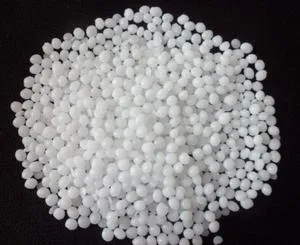
CAS 26100
Product introduction: Polylactic acid (referred to as "PLA") is further polymerized from lactic acid produced by starch
Basic Info.
| Model NO. | 602 |
| Production Capacity | 40, 000 Tons/Year |
Product Description
Product introduction:Polylactic acid (referred to as "PLA") is further polymerized from lactic acid produced by starch or sugar fermentation. It does not use petroleum as raw material, and is environmentally friendly, non-toxic, antibacterial, flame retardant, good biocompatibility, and biodegradable Characteristics, is considered to be the most promising new material to shake the traditional position of petroleum-based plastics and chemical fibers in the future.
Features:
Polylactic acid and its products have stable physical properties under normal temperature and humidity conditions. It is a completely degradable biological material that can be recycled. After being discarded, it can be degraded into carbon dioxide and water. After photosynthesis by plants, it is absorbed again by plants. Infinite Reciprocated into the natural cycle, known as "the environmental recycling material of the 21st century."
Its main performance characteristics are as follows:
Renewability of sources: The main sources are various starch crops such as corn and potato, as well as crop straws;
Complete biodegradation: can be absorbed and metabolized by the human body; within one year after the product is discarded under landfill conditions, it is completely degraded into CO2 and H2O by microorganisms in the soil or seawater, realizing the carbon cycle on the surface and effectively changing the petroleum-based material belt Incoming environmental pollution;
Human affinity and safety: The raw material lactic acid is a substance contained in the human body. PLA can be absorbed by the body's metabolism. PLA is an FDA-approved human implant material, which has been used on a large scale for decades in the medical field;
Excellent processing performance: it can be processed in many ways, such as extrusion, spinning, biaxial stretching, injection blow molding;
Natural bacteriostatic and anti-mite: The bacteriostatic and anti-mite rate against Candida albicans, E. coli, and Staphylococcus aureus reaches 95%
Natural flame resistance:
safe and flame retardant, less smoke, no black smoke, no toxic gas;
Excellent gloss, transparency, feel, UV resistance, moisture conductivity, non-wetting, etc.
Applications:
Polylactic acid can be made into polylactic acid fiber, and its performance is comparable to cotton. In addition, polylactic acid is similar to general chemical materials such as polypropylene (PP), polyethylene (PE), and polyester fibers (PET, PTT, PBT). The performance can be processed by injection molding, extrusion, spinning and other processes to be made into fibers, films, sheets, plates, and gradually replace petrochemical fibers and petroleum plastics, which are widely used in clothing, packaging, agriculture, household, and automotive zero Parts, 3D printing, biomedicine and many other fields.
Packaging specifications:
Small packages are packed in kraft paper bags lined with aluminum plastic bags, with a net content of 25kg per bag, and large packages are packed in cartons lined with aluminum plastic bags, with a net content of 750kg per box, and can also be packed according to customer requirements.
Storage conditions:
It should be stored in a cool, dust-proof and dry special warehouse. During transportation, it is necessary to prevent the sun, rain, and transportation means from being cleaned to prevent the packaging bag from being damaged. It is forbidden to mix and transport with poisonous, harmful, corrosive substances and other pollutants during re-storage.
Implementation Standard: GB29284-2012
| NO. | Items | Standard | |
| 1 | Apperance | Generally transparent and translucent particles, no odor, no foreign body | |
| 2 | Moisture,%≤ | ≤0.05 | |
| 3 | Density/(g/cm) | 1.25±0.05 | |
| 4 | Melt mass flow rate [MFR/(G/10)]deviation (2.16kg)/% | MFR | ±0.5 |
| 5≤MFR<10 | ±2 | ||
| 10≤MFR<20 | ±5 | ||
| MFR≥20 | ±10 | ||
| 5 | Melting point/ºC | ≥125 | |
| 6 | Glass transition temperature /ºC | ≥50 | |
| 7 | Tensile Strength /Mpa | ≥45 | |
| 8 | Notched impact strength(kj/m2) | ≥1 | |
| 9 | Biodegradability /% | ≥60 | |
| 10 | Burning residue | ≤0.3 | |
| 11 | N-hexane extract /% | ≤2 | |
| 12 | Volatile matter content/% | ≤0.5 | |
| 13 | Intrinsic viscosity deviation (dL/g) | ±0.02 | |
| 14 | Weight average molecular weight deviation/% | ±20 | |
| Remark 1, 10-12 inspection items are inspected only when PLA is used for processing into food packaging materials. Remark 2, Items 13-14 are optional. When necessary, one of the two is usually required. Remark 3, For performance requirements not listed in the table, such as bending strength, nominal strain at break, etc., interested parties can negotiate to determine specific technical requirements and test methods. | |||
List of Physical properties
| Testing Item | FY201 | FY202 | FY204 | FY401 | FY402 | FY404 | FY601 | FY602 | FY604 | FY801 | FY802 | FY804 |
| Appearance | transparency translucent | |||||||||||
| Density | 1.24 | 1.24 | 1.24 | 1.24 | 1.24 | 1.24 | 1.24 | 1.24 | 1.24 | 1.24 | 1.24 | 1.24 |
| Moisture | ≤0.04 | ≤0.04 | ≤0.04 | ≤0.04 | ≤0.04 | ≤0.04 | ≤0.04 | ≤0.04 | ≤0.04 | ≤0.04 | ≤0.04 | ≤0.04 |
| Monomer content% | ≤0.3 | ≤0.3 | ≤0.3 | ≤0.3 | ≤0.3 | ≤0.3 | ≤0.3 | ≤0.3 | ≤0.3 | ≤0.3 | ≤0.3 | ≤0.3 |
| MFR | 30 | 30 | 30 | 18 | 18 | 18 | 9 | 9 | 9 | 4 | 4 | 4 |
| D-content % | <1 | 2 | 4 | <1 | 2 | 4 | <1 | 2 | 4 | <1 | 2 | 4 |
| Melting point ºC | 175 | 165 | 155 | 175 | 165 | 155 | 175 | 165 | 155 | 175 | 165 | 155 |
Send to us






